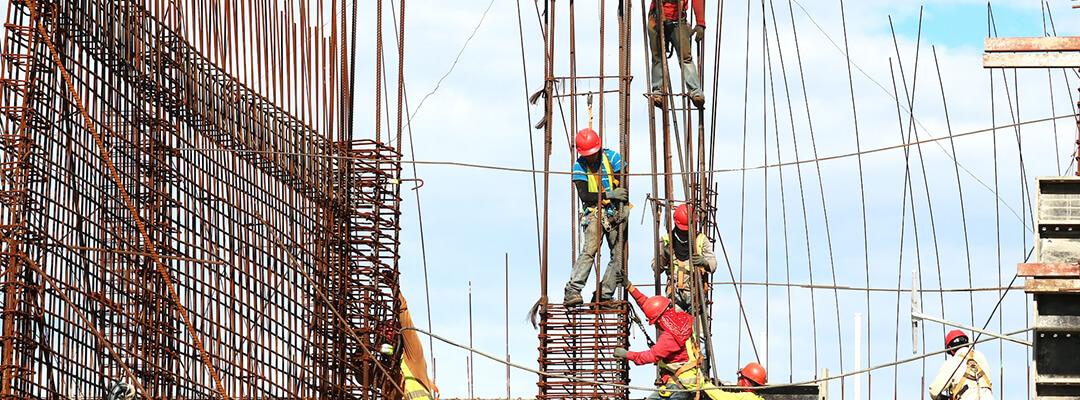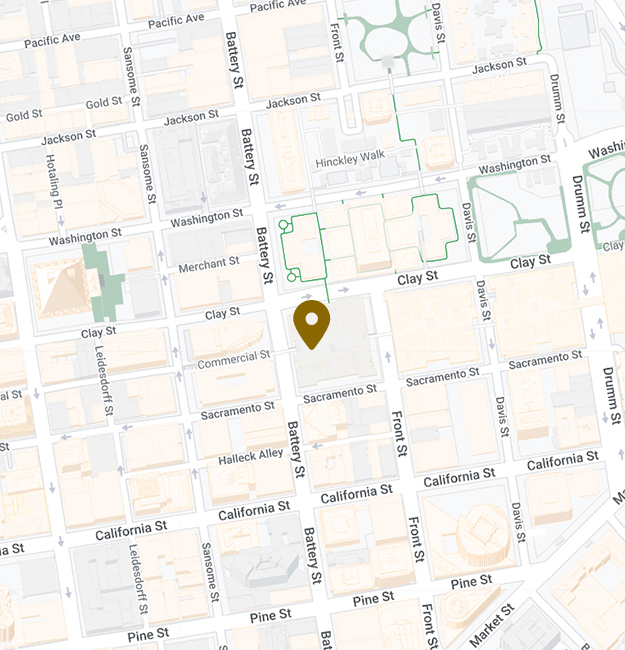Common Workplace Injuries in San Francisco

The Most Common Workplace Injuries in San Francisco: Prevention and Compensation Guide
San Francisco is recognized globally for its dynamic industries and thriving economy, attracting a diverse workforce. However, this bustling activity leads to thousands of workplace injuries each year, impacting workers across various sectors. Recent statistics from the U.S. Bureau of Labor Statistics indicate that California saw approximately 364,000 nonfatal workplace injuries and illnesses in 2023 alone. Behind each statistic is a story of a worker dealing with physical discomfort, emotional strain, and financial concerns due to an unexpected injury.
From tech professionals developing repetitive strain injuries in offices downtown, to construction crews navigating serious safety hazards, the variety of workplace risks is vast. Understanding these injury patterns is crucial for workers to protect themselves, know their rights, and effectively navigate the compensation process should an injury occur. This detailed guide explores common workplace injuries in major industries across San Francisco, providing comprehensive prevention strategies and insights into successfully managing compensation claims.
San Francisco’s Industry-Specific Injury Patterns
San Francisco’s unique economic landscape results in distinctive injury patterns for each major industry, including technology, construction, healthcare, hospitality, and manufacturing. Workers and employers alike must recognize these industry-specific risks to mitigate them effectively.
Tech Industry Injuries
Tech workers in San Francisco frequently experience repetitive strain injuries due to prolonged computer usage and improper ergonomic setups. Conditions such as carpal tunnel syndrome, tendonitis, and chronic back pain are increasingly common. Additionally, extended periods of screen exposure lead to eye strain, headaches, and vision-related problems. Mental health concerns like anxiety, depression, and burnout from high-stress environments and demanding workloads further compound these issues.
Preventative measures in the tech industry include ergonomic furniture, adjustable desks, regular breaks, and mental health support programs. Workers facing injuries in this sector often require extensive documentation linking their conditions explicitly to their job duties. Remote workers, in particular, face unique challenges in proving workplace-related injuries, necessitating detailed ergonomic assessments and medical records.
Construction Industry Injuries
The construction sector in San Francisco carries substantial risks due to the inherent dangers of the job. Workers frequently face severe injuries from falls, including incidents involving scaffolding, ladders, and rooftops. Additionally, injuries from falling objects, equipment malfunctions, trench collapses, and electrical hazards are commonplace.
Prevention strategies include strict safety protocols, regular training sessions, proper use of personal protective equipment (PPE), and adherence to OSHA guidelines. Due to the severity of construction-related injuries, workers typically endure lengthy recovery periods and substantial medical treatments. Claims may also involve third-party liability when multiple contractors share responsibility for a construction site. In these situations, a construction injury lawyer may assist.
Healthcare Industry Injuries
Healthcare professionals encounter a variety of workplace hazards, including back and shoulder injuries from patient handling, needlestick injuries, and exposure to infectious diseases. Increasing incidents of workplace violence also pose significant risks in medical facilities. To reduce these hazards, facilities implement mechanical lifting equipment, safety-engineered medical devices, violence prevention training, and strict hygiene protocols.
Claims from healthcare workers often involve substantial documentation, prolonged recovery periods, and careful consideration of permanent disabilities. Additionally, specific regulatory protections exist for certain conditions, including presumptive benefits for infectious diseases acquired at work.
Hospitality and Service Industry Injuries
San Francisco’s thriving hospitality sector presents its own unique risks. Restaurant employees frequently experience burns, cuts, and slip-and-fall injuries, particularly in busy kitchen environments. Hotel workers face repetitive motion injuries from housekeeping duties and accidents during maintenance tasks.
Employers in hospitality must provide comprehensive safety training, implement ergonomic equipment, maintain clean work environments, and enforce appropriate safety protocols. Workers in this sector may face challenges with compensation claims due to factors such as tip income reporting, language barriers, and the complexities of multiple part-time positions.
Manufacturing and Warehousing Injuries
Manufacturing and warehousing employees often deal with machinery-related incidents, transportation accidents, and injuries from heavy lifting or repetitive tasks. Preventative measures include regular safety training, proper machinery operation instructions, hazard communication programs, and routine workplace inspections.
Claims in this industry typically require detailed incident reports, substantial medical documentation, and may involve vocational rehabilitation due to long-term impairments.
Most Common Workplace Injuries Across Industries
Across various sectors, several injury types consistently dominate workers’ compensation claims:
Sprains and Strains
Muscular injuries affecting the back, shoulders, and knees constitute a significant percentage of workplace claims. These injuries often arise from improper lifting techniques, repetitive tasks, or sudden movements. Recovery can vary significantly, ranging from short-term physical therapy treatments to prolonged disability and chronic conditions impacting long-term employability.
Fractures and Dislocations
Serious injuries such as fractures and dislocations frequently result from falls, impacts, or accidents involving machinery. These injuries often necessitate extensive medical interventions, including surgeries, lengthy rehabilitation periods, and potential permanent disabilities, significantly affecting the worker’s quality of life and earning capacity.
Repetitive Strain Injuries
Common among office and manual workers, repetitive strain injuries include conditions like tendonitis and carpal tunnel syndrome. These conditions require detailed ergonomic assessments, modifications to work environments, ongoing medical care, and potentially long-term adjustments to work duties to prevent recurrence.
Prevention Strategies for Workplace Injuries
Preventing workplace injuries involves cooperative efforts between employers and employees. Employers must comply with California’s Injury and Illness Prevention Programs (IIPP), conduct regular safety inspections, provide comprehensive training, and swiftly address identified hazards. Employees must actively engage by reporting unsafe conditions, adhering to safety protocols, and utilizing protective equipment consistently.
Workers’ Compensation Claims Process
Injury Reporting and Documentation
Immediate and thorough injury reporting is essential. Workers should notify employers within 30 days, providing clear and detailed accounts of the injury incident. Collecting witness statements, photographic evidence, and thorough medical documentation strengthens the claim and assists in timely processing.
Medical Treatment and Disability Ratings
After an injury, workers should promptly seek medical attention, ideally through providers designated by their employers. Accurate medical documentation detailing the injury’s extent, treatment plan, and prognosis significantly impacts disability rating determinations. These ratings directly influence compensation amounts, making thorough medical records critically important.
Claim Disputes and Appeals
Claims often face initial denial due to disputes over the injury’s connection to workplace activities or insufficient documentation. Workers facing denial have the right to appeal through the Workers’ Compensation Appeals Board (WCAB). Engaging experienced legal representation can greatly enhance chances of a successful appeal, navigating complexities and ensuring proper presentation of evidence.
When to Seek Legal Assistance For Common Workplace Injuries
Legal assistance becomes essential in complex injury claims, severe or catastrophic cases, or when disputes arise over the compensability of the injury. Workers’ compensation attorneys specialize in navigating intricate legal processes, gathering comprehensive evidence, and advocating effectively in hearings or settlement negotiations. Typically working on contingency fees, attorneys provide accessible legal support, ensuring injured workers receive fair treatment and maximum entitled compensation.
Anderson Franco Law Handle Common Workplace Injuries in San Francisco:
Workplace injuries significantly impact San Francisco workers across all industries. Understanding common injury patterns, adopting rigorous preventative measures, and fully grasping the rights provided under California’s workers’ compensation laws are essential steps toward safeguarding health and financial stability. Workers facing injuries should immediately seek medical attention, meticulously document their claims, and consider legal counsel to effectively navigate the workers’ compensation process. Through awareness, prevention, and proper action, workers can better protect themselves and ensure just compensation in the event of workplace injuries.









